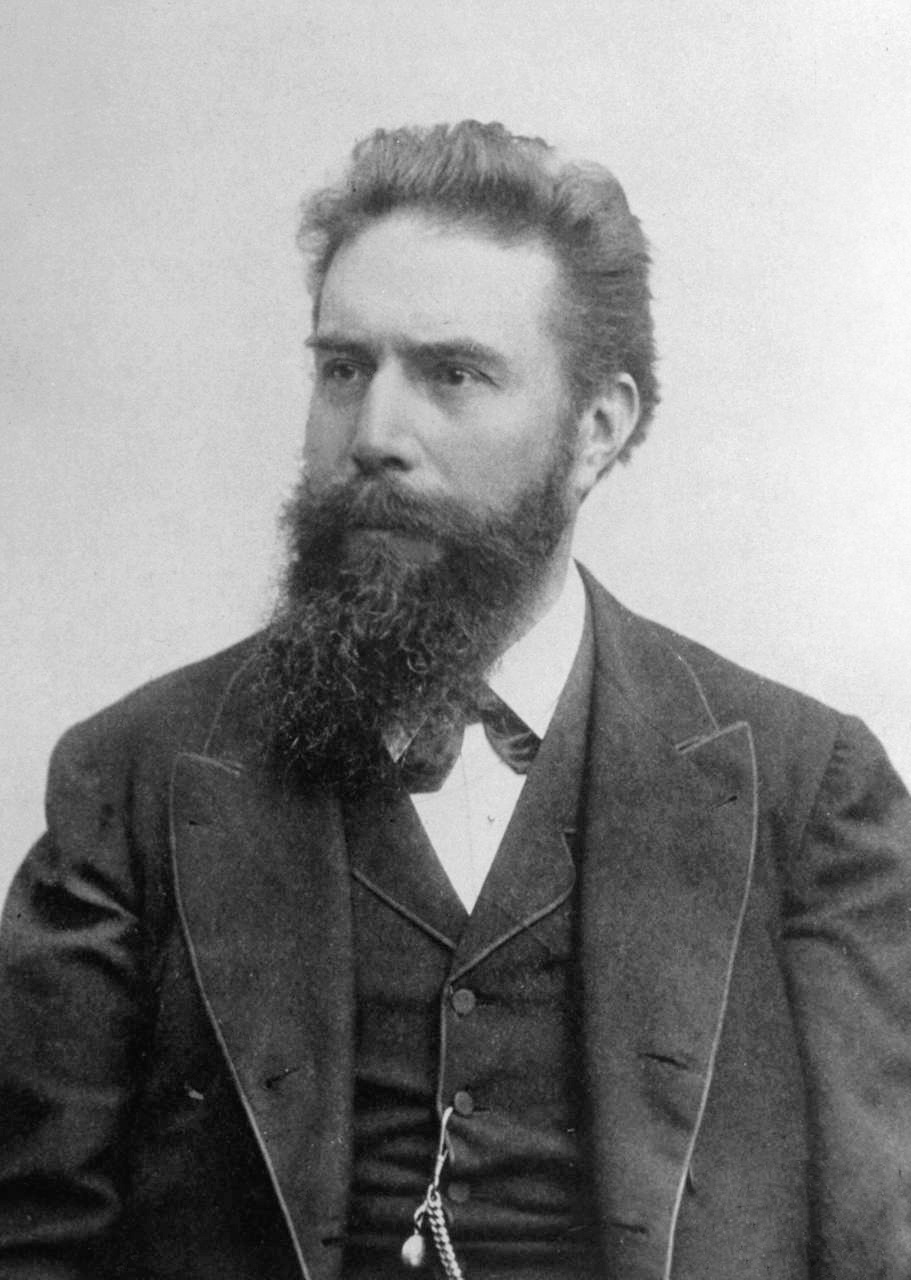Ludwig Zehnder (Hrsg.): Briefe an L. Zehnder, Rascher & Cie A.G. : Zürich 1935, S. 39.
Wilhelm Conrad Röntgen Berühmte Zitate
„Es gibt noch viel zu tun, und ich bin sehr beschäftigt.“
zur Entdeckung der Röntgenstrahlung, Übersetzung nach: Otto Glasser, Wilhelm Conrad Röntgen und die Geschichte der Röntgenstrahlen, 2. Aufl., Springer, Berlin 1931, ISBN 978-3-642-49402-4, S.12,
Original engl.: "There is much to do, and I am busy, very busy." - H. J. W. Dam, The new marvel in photography in: McClure's Magazine, Vol. 6 No. 5, April 1896, S. 414, www.gutenberg.org http://www.gutenberg.org/files/14663/14663-h/14663-h.htm#page403
„Ich dachte nicht, sondern ich untersuchte.“
auf die Frage, was er bei der Entdeckung der Röntgenstrahlung dachte, Übersetzung nach: Otto Glasser, Wilhelm Conrad Röntgen und die Geschichte der Röntgenstrahlen, 2. Aufl., Springer, Berlin 1931, ISBN 978-3-642-49402-4, S.11,
Original engl.: "I did not think; I investigated." - H. J. W. Dam, The new marvel in photography in: McClure's Magazine, Vol. 6 No. 5, April 1896, S. 413, www.gutenberg.org http://www.gutenberg.org/files/14663/14663-h/14663-h.htm#page403
zur Bennenung der Röntgenstrahlung, Ueber eine neue Art von Strahlen (Vorläufige Mittheilung), S.2, Fußnote in: Sonderabbdruck aus den Sitzungsberichten der Würzburger Physik.-medic. Gesellschaft 1895, Stahel’sche K. Hof- und Universitätsbuch- und Kunsthandlung, Würzburg 1895, de.wikisource.org https://de.wikisource.org/wiki/Ueber_eine_neue_Art_von_Strahlen_(Vorl%C3%A4ufige_Mittheilung)#cite_ref-2
über die Röntgenstrahlung, Übersetzung nach: Otto Glasser, Wilhelm Conrad Röntgen und die Geschichte der Röntgenstrahlen, 2. Aufl., Springer, Berlin 1931, ISBN 978-3-642-49402-4, S.11,
Original engl.: "It seemed at first a new kind of invisible light. It was clearly something new, something unrecorded." - H. J. W. Dam, The new marvel in photography in: McClure's Magazine, Vol. 6 No. 5, April 1896, S. 413, www.gutenberg.org http://www.gutenberg.org/files/14663/14663-h/14663-h.htm#page403
Wilhelm Conrad Röntgen: Zitate auf Englisch
The New Marvel in Photography (1896)
Kontext: Having discovered the existence of a new kind of rays, I of course began to investigate what they would do. … It soon appeared from tests that the rays had penetrative power to a degree hitherto unknown. They penetrated paper, wood, and cloth with ease; and the thickness of the substance made no perceptible difference, within reasonable limits. … The rays passed through all the metals tested, with a facility varying, roughly speaking, with the density of the metal. These phenomena I have discussed carefully in my report to the Würzburg society, and you will find all the technical results therein stated.
“We shall see what we shall see. We have the start now; the developments will follow in time.”
The New Marvel in Photography (1896)
The New Marvel in Photography (1896)
Kontext: I was working with a Crookes tube covered by a shield of black cardboard. A piece of barium platino-cyanide paper lay on the bench there. I had been passing a current through the tube, and I noticed a peculiar black line across the paper. … The effect was one which could only be produced, in ordinary parlance, by the passage of light. No light could come from the tube, because the shield which covered it was impervious to any light known, even that of the electric arc. … I did not think; I investigated. I assumed that the effect must have come from the tube, since its character indicated that it could come from nowhere else. I tested it. In a few minutes there was no doubt about it. Rays were coming from the tube which had a luminescent effect upon the paper. I tried it successfully at greater and greater distances, even at two metres. It seemed at first a new kind of invisible light. It was clearly something new, something unrecorded.
“I did not think; I investigated.”
The New Marvel in Photography (1896)
Kontext: I was working with a Crookes tube covered by a shield of black cardboard. A piece of barium platino-cyanide paper lay on the bench there. I had been passing a current through the tube, and I noticed a peculiar black line across the paper. … The effect was one which could only be produced, in ordinary parlance, by the passage of light. No light could come from the tube, because the shield which covered it was impervious to any light known, even that of the electric arc. … I did not think; I investigated. I assumed that the effect must have come from the tube, since its character indicated that it could come from nowhere else. I tested it. In a few minutes there was no doubt about it. Rays were coming from the tube which had a luminescent effect upon the paper. I tried it successfully at greater and greater distances, even at two metres. It seemed at first a new kind of invisible light. It was clearly something new, something unrecorded.
“I am pursuing my investigations, and as fast as my results are verified I shall make them public.”
The New Marvel in Photography (1896)
Kontext: I am not a prophet, and I am opposed to prophesying. I am pursuing my investigations, and as fast as my results are verified I shall make them public.
The New Marvel in Photography (1896)
Kontext: I was working with a Crookes tube covered by a shield of black cardboard. A piece of barium platino-cyanide paper lay on the bench there. I had been passing a current through the tube, and I noticed a peculiar black line across the paper. … The effect was one which could only be produced, in ordinary parlance, by the passage of light. No light could come from the tube, because the shield which covered it was impervious to any light known, even that of the electric arc. … I did not think; I investigated. I assumed that the effect must have come from the tube, since its character indicated that it could come from nowhere else. I tested it. In a few minutes there was no doubt about it. Rays were coming from the tube which had a luminescent effect upon the paper. I tried it successfully at greater and greater distances, even at two metres. It seemed at first a new kind of invisible light. It was clearly something new, something unrecorded.
